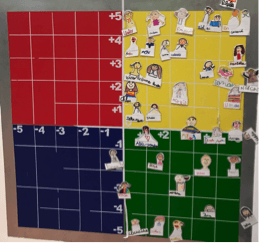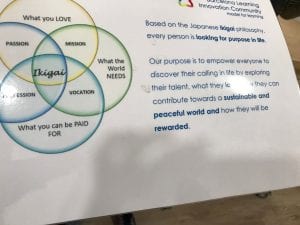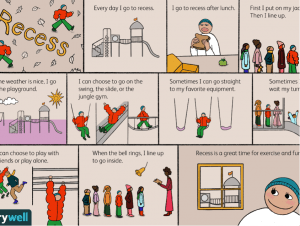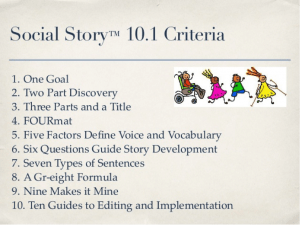As I walked through Col-legi Mare de Déu dels Àngels and Col-legi Montserrat, two of the three schools I visited in Barcelona with my colleagues, consistency and progression were manifested in every process and facet of the day-to-day operations. Immersing myself in these schools has been a life changing experience. It has changed my view of teaching and education and has reaffirmed my belief that our own education system here in Australia demands change and transformation.
In order to develop the whole child, the schools embody the theory of Multiple Intelligence by Howard Gardner who theorised that people don’t only have an intellectual capacity, but many other kinds of intelligence, including Musical, Spatial-Visual, Interpersonal, Intrapersonal, Linguistic-Verbal, Logical, Bodily Kinesthetic and Naturalistic intelligence. Addressing every aspect of the human being is clear right from preschool through physical stimulatio n, violin classes and water activities, through primary and high school with Chess, Robethics (robotics and ethics), Project Based Learning and Visual Learning Projects.
n, violin classes and water activities, through primary and high school with Chess, Robethics (robotics and ethics), Project Based Learning and Visual Learning Projects.
As we observe their carefully implemented activities, the ‘why’ becomes obvious. The two schools believe in a holistic approach to educating a child, where self esteem, self reflection and self respect makes way for respecting others, as it develops an independent, confident, self driven contributor to society. The traditional syllabus is still very much at the core of the school’s foundation, which raised an interesting notion of finding a balance between a transformed way of thinking with the traditional education system which still addresses the needs of a 1950’s child.
The pre-school program was particularly interesting. Early physical stimulation is a prerequisite
 for developing multiple intelligences. The theory suggests that physical excellence at different levels is related to learning success because when the brain doesn’t work well it provokes learning problems as they believe reading problems are related to an inability to focus rather than problems with vision.
for developing multiple intelligences. The theory suggests that physical excellence at different levels is related to learning success because when the brain doesn’t work well it provokes learning problems as they believe reading problems are related to an inability to focus rather than problems with vision.
At the pre-school level we observed students on the monkey bars. One would think it’s main focus would be to develop and strengthen the arm muscles, but it was enlightening to learn that muscle strength would just be the by-product of such an activity. As it turns out students needed to learn at the age of three to hold the bars with their thumbs in front and over their four fingers. This skill  would later assist with handwriting. They were then encouraged to move forward using alternate hands, as the focus became the objective. This activity also helps control breathing, and cultivates confidence and a sense of security through the development of trust between each student and their teacher, as the student is asked to let go at the end of the activity and fall into the hands of their teacher.
would later assist with handwriting. They were then encouraged to move forward using alternate hands, as the focus became the objective. This activity also helps control breathing, and cultivates confidence and a sense of security through the development of trust between each student and their teacher, as the student is asked to let go at the end of the activity and fall into the hands of their teacher.

The Suzuki method was used in a violin class with 4 years olds. The instrument provides a window to multiple intelligences. They learned to play the violin through imitation; very much the same way language is learned. Parents help start students from a year and half! They pickup hand position and how to hold the bow as well as learn a simple song at 3 years of age and at 4 years they learn to play a more complex song. Holding the bow develops fine motor skills while learning rhythm through bodily movement addresses Musical, Linguistic and Kinesthetic intelligence.
Students at the age of one year were involved in physical stimulation classes, which have significant repercussions on brain development regarding Interpersonal and Logical Intelligence. Side to side movement developed balance, which was coup led with emotional work to foster feelings of safety. Parents were required to do a formation course to help them understand why this was important in their child’s development and so that they could reiterate and practice these activities at home.
led with emotional work to foster feelings of safety. Parents were required to do a formation course to help them understand why this was important in their child’s development and so that they could reiterate and practice these activities at home.
In the Year One class children were learning to express themselves through art as it developed Interpersonal and Intrapersonal intelligence along with Spatial-Visual intelligence. They chose topics of interest such as family and friendship and through these lived experi ences they focus on the other, helping to recognise the creativity of each individual.
ences they focus on the other, helping to recognise the creativity of each individual.
In Year Six we observed a lesson in Chess, which focuses on the development of Gardener’s Visual and Logical Intelligence. Students begin learning Chess at the age of two and continue on into Year Six. Chess is believed to develop various skills such as co gnitive abilities, coping and problem-solving skills, leadership skills, decision-making, strategic planning, logical thinking and responsibility. The Armenian education minister said once in support of Chess being part of their curriculum that “The future of the world depends on such creative leaders who have the capacity to make the right decisions, as well as the character to take responsibility for wrong decisions.”
gnitive abilities, coping and problem-solving skills, leadership skills, decision-making, strategic planning, logical thinking and responsibility. The Armenian education minister said once in support of Chess being part of their curriculum that “The future of the world depends on such creative leaders who have the capacity to make the right decisions, as well as the character to take responsibility for wrong decisions.”
 At the High School level we observed students develop Intrapersonal and logical intelligence through their Robethics class, a combination of robotics and ethics where students, find real life problems and work together as a team towards solving them. We also saw Years 11 and 12 present a PBL and visual learning project. In all the classes we observed, students worked together to solve a problem that was posed to them.
At the High School level we observed students develop Intrapersonal and logical intelligence through their Robethics class, a combination of robotics and ethics where students, find real life problems and work together as a team towards solving them. We also saw Years 11 and 12 present a PBL and visual learning project. In all the classes we observed, students worked together to solve a problem that was posed to them.
The things that stood out most for me were the confidence of the students who were presenting to us, their fluency in English, the politeness, manners and respect particularly of the young adults we encountered. In the primary years we saw well behaved, and engaged students who were ever willing to explain their activity and answer our questions.
 Our Dream School, the third school we visited, got us thinking about building positive relationships, shifting our mindset from control and helping students to discover their strength, interest, passion and purpose which leads to empowerment.
Our Dream School, the third school we visited, got us thinking about building positive relationships, shifting our mindset from control and helping students to discover their strength, interest, passion and purpose which leads to empowerment.
The week spent in Barcelona has reaffirmed my belief in the importance of a holistic approach to education. I would like to see the reflective time we have implemented this year grow further by introducing the mood meter that allows for students to name their emotion. The chart works by plotting their energy and feelings by measuring them numerically, which ultimately defines the student’s emotional position that day. Focusing on the theory of Multiple Intelligence to diversify instruction will honour and respond to the diversity in each student’s talents and abilities while building values and independence, making it possible to nurture faith filled curious children and innovative problem solvers.


 n, violin classes and water activities, through primary and high school with Chess, Robethics (robotics and ethics), Project Based Learning and Visual Learning Projects.
n, violin classes and water activities, through primary and high school with Chess, Robethics (robotics and ethics), Project Based Learning and Visual Learning Projects. for developing multiple intelligences. The theory suggests that physical excellence at different levels is related to learning success because when the brain doesn’t work well it provokes learning problems as they believe reading problems are related to an inability to focus rather than problems with vision.
for developing multiple intelligences. The theory suggests that physical excellence at different levels is related to learning success because when the brain doesn’t work well it provokes learning problems as they believe reading problems are related to an inability to focus rather than problems with vision. would later assist with handwriting. They were then encouraged to move forward using alternate hands, as the focus became the objective. This activity also helps control breathing, and cultivates confidence and a sense of security through the development of trust between each student and their teacher, as the student is asked to let go at the end of the activity and fall into the hands of their teacher.
would later assist with handwriting. They were then encouraged to move forward using alternate hands, as the focus became the objective. This activity also helps control breathing, and cultivates confidence and a sense of security through the development of trust between each student and their teacher, as the student is asked to let go at the end of the activity and fall into the hands of their teacher.
 led with emotional work to foster feelings of safety. Parents were required to do a formation course to help them understand why this was important in their child’s development and so that they could reiterate and practice these activities at home.
led with emotional work to foster feelings of safety. Parents were required to do a formation course to help them understand why this was important in their child’s development and so that they could reiterate and practice these activities at home. ences they focus on the other, helping to recognise the creativity of each individual.
ences they focus on the other, helping to recognise the creativity of each individual. gnitive abilities, coping and problem-solving skills, leadership skills, decision-making, strategic planning, logical thinking and responsibility. The Armenian education minister said once in support of Chess being part of their curriculum that “The future of the world depends on such creative leaders who have the capacity to make the right decisions, as well as the character to take responsibility for wrong decisions.”
gnitive abilities, coping and problem-solving skills, leadership skills, decision-making, strategic planning, logical thinking and responsibility. The Armenian education minister said once in support of Chess being part of their curriculum that “The future of the world depends on such creative leaders who have the capacity to make the right decisions, as well as the character to take responsibility for wrong decisions.” At the High School level we observed students develop Intrapersonal and logical intelligence through their Robethics class, a combination of robotics and ethics where students, find real life problems and work together as a team towards solving them. We also saw Years 11 and 12 present a PBL and visual learning project. In all the classes we observed, students worked together to solve a problem that was posed to them.
At the High School level we observed students develop Intrapersonal and logical intelligence through their Robethics class, a combination of robotics and ethics where students, find real life problems and work together as a team towards solving them. We also saw Years 11 and 12 present a PBL and visual learning project. In all the classes we observed, students worked together to solve a problem that was posed to them. Our Dream School, the third school we visited, got us thinking about building positive relationships, shifting our mindset from control and helping students to discover their strength, interest, passion and purpose which leads to empowerment.
Our Dream School, the third school we visited, got us thinking about building positive relationships, shifting our mindset from control and helping students to discover their strength, interest, passion and purpose which leads to empowerment.